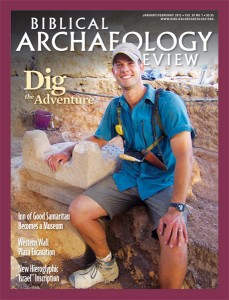Settlement and History in Hellenistic, Roman, and Byzantine Galilee: An Archaeological Survey of Eastern Galilee
by Uzi Leibner (Tübingen: Mohr Siebeck, 2009), 471 pp. (hardcover)
The historical events that took place in Galilee, mainly during the Roman and Byzantine periods, make it a significant area of research and importance to Judaism and Christianity. Both played a major role in those events.
The best tool to study the region’s settlements, geographical features, industry and ethnicity is an archaeological survey. Uzi Leibner undertook this task. He surveyed the northern part of Eastern Lower Galilee, an area of about 285 km2 (70,425 acres). He focused on the period between the Hellenistic period and the end of the Byzantine period (300 B.C.E.–650 C.E.). Whether through archaeological evidence or early written sources, almost a millennium of human heritage is reviewed and examined in a rural area west of the Sea of Galilee, an area that barely “suffered” from modern development, hence allowing better observation of the ancient environment and settlements.
The pottery, as usual, serves as the major variable. With the guidance of Professor David Adan-Bayewitz, nowadays perhaps the leading pottery expert on the Galilee during the Roman Period, Leibner analyzes potsherds according to their typology, chronology, quantity and distribution within a site. On this basis, he determined periods of occupation and size of the site.
Already a library member? Log in here.
Institution user? Log in with your IP address.

